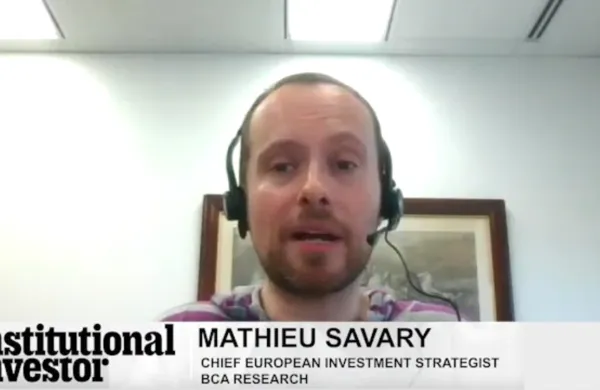Moody’s Investors Service confirmed Spain’s investment-grade rating this month, prompting a sharp fall in yields as the markets heaved a sigh of relief.
Days earlier Spain’s economy minister, Luis de Guindos, had declared that Spanish Treasury data showed a resurgence in interest among foreign investors, whose earlier desertion had triggered sharp rises in yields. De Guindos’ comments are echoed by some large asset managers who say they sense a similar uptick in interest.
Key to both these positive developments is the August offer by Mario Draghi, president of the European Central Bank (ECB), to buy the debt of countries that had applied to the euro zone for financial rescue through a new “outright monetary transactions” (OMT) program. Moody’s cited this development in its rating assessment, saying that it “materially reduced” the “risk of the Spanish sovereign losing market access.”
In response to the ECB’s move, and to its positive effect on rating agency and investor sentiment, Spanish 10-year yields have fallen from a spike above 7.50 percent to 5.59 percent at the end of Thursday’s European trading.
Some analysts see the ECB as akin to the big friend in the playground who does not even need to lift a finger to protect his weaker friend from a sound thrashing: the mere prospect of ECB intervention has calmed the Spanish bond market, even if Spain does not actually request it in the end. However, the majority of analysts do expect the Spanish government to apply to the European Stability Mechanism (ESM), the euro zone’s rescue fund, for a precautionary credit line — the essential first step necessary for any country which desires OMT aid, according to the rules set by the ECB.
What happens, however, if the friend in the playground walks away? Draghi has pledged that the ECB will suspend a country’s OMT program if its government fails to stick to its side of the bargain with the euro zone authorities. To secure Spain’s credit line from the ESM, its politicians will have to continue imposing austerities in spending and tax on a potentially unwilling public — which may, through its collective resistance, break the fiscal promises made on their behalf. For the ECB to support Spain or any other troubled peripheral euro zone country, and then withdraw that support because of misbehavior, would most likely force yields up to levels where they would only be attractive to distressed debt funds — and that would leave these countries unable to service their debt within a matter of months, or possibly merely weeks.
On the positive side, the ruling centre-right party’s convincing Sunday victory in the local Galician elections suggests that, for the moment, the majority of Spaniards are on its side. The poll had been seen as a referendum on the 11 months of harsh austerity imposed by premier Mariano Rajoy since he came to power.
“The result in Galicia is viewed as a clear endorsement of the conservatives’ fiscal straightjacket,” says Christel Aranda-Hassel, European economist at Credit Suisse in London. It “gives room to Prime Minister Rajoy to target further cuts.”
Nevertheless, even if the nightmare scenario of ECB abandonment is not realized, continuing danger arises from the fact that Spanish bond yields remain extremely high for a low-inflation era — high enough to make paying off the debt a long struggle. Are they set to remain at these elevated levels?
Draghi’s Wednesday comments to German members of parliament in Berlin on the OMT program provide clues to his thinking on appropriate yields, but the exact nature of what he has in mind remains vague.
“Interventions are designed to send a clear signal to investors that their fears about the euro area are baseless,” Draghi declared on Wednesday, thereby repeating his earlier suggestion that the primary aim of OMT is to remove the extra risk premium priced into peripheral euro zone bonds arising from the possibility of a breakup of the euro area. Such an exit would greatly reduce the value of the bonds, since they would be serviced and redeemed in a different, probably weaker currency. Eliminating the extra premium that exists because of break-up fears requires fairly unambitious reductions in yields — the bulk of the gaping 400 basis point (bp) spread between Spanish and German 10-years reflects not concerns about euro zero disintegration but concerns that Spain will be unable to repay its debt in euros even if it stays in the euro zone. At the beginning of last year, before talk of euro breakup had begun, Spanish 10-year yields were 5.46 percent — only 13bp below Thursday’s close. This implies that Draghi does not plan to reduce yields much further below where they are now. He certainly envisages a continuing wide spread between the core and the periphery, even though such a wide variation in benchmark lending rates in different locations is a phenomenon utterly at odds with normal monetary policy transmission in a normal, well-functioning currency zone. On Wednesday he noted: “Interest rates do not have to be identical across the euro area.”
More broadly, Draghi’s actions since the euro zone crisis began last year, including his highly conditional but very timely support for Italy and Spain, suggest a consistent line. The line is that he is prepared to do just about what it takes to keep countries going, but no more, because if he goes further than absolutely necessary he fears that countries will be unwilling to solve their own problems through deregulation of labor and product markets. In other words, they will not reform unless they stay scared enough to do so. He repeated this tough line on Wednesday, saying that “the first responsibility” was “for countries to make determined reforms and convince markets that they are credible.” The vagueness of the euro exit premium is an advantage, since it allows Draghi the freedom of action to pursue this “just-enough” policy.
Spain’s borrowing costs are still challenging: They are on the very edge of what can sustainably be serviced by the Spanish government, without cutting spending so severely to meet debt payments that the economy will go into freefall. However, Draghi’s opaque language about the euro exit premium allows him to adjust Spain’s interest rate burden to the level which he sees as sustainable. He can bring yields down considerably further below today’s levels if necessary through extremely aggressive OMT intervention; alternatively, he can intervene more sparingly, to keep yields roughly where they are now.
So instead of being the ever watchful bully-protector, the ECB is really more like the playground friend who makes you do the fighting, but always lifts you up and dusts you down, keeping you ready for the next round.
In a sense this is a reassuring notion. However, it also suggests that Draghi will be keeping Spain and other peripheral countries in constant near-crisis mode over the many years that it will take to bring their debts down to safe levels — with consequent spikes and fallbacks in sovereign yields. The weak boy in the playground may ultimately win, but there will be plenty of nerve-wracking moments for the markets when his friends worry if he is out for the count.






